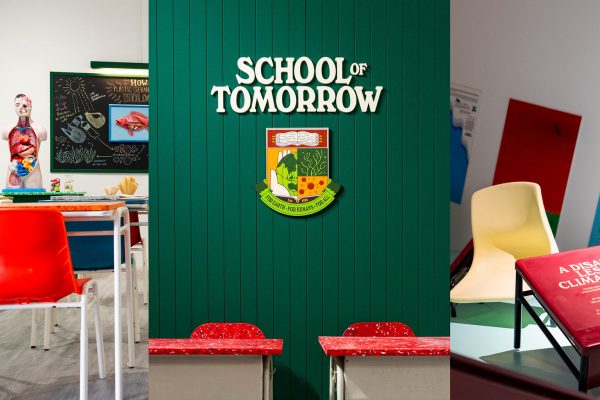BY: SHEERE NG, Tuck Shop
PHOTOS BY: JOVIAN LIM
PUBLISHED BY: By Design: SINGAPORE
Kitchen utensils are common across the world. But look closer and you’ll find variations born out of cultural differences. In Singapore, our hawkers have fed several generations with their tasty meals that are quickly prepared. Many of these dishes and the tools to prepare them have persisted despite the onset of modern industrial cooking. But in order to feed a larger — and an increasingly time-starved — population, today’s hawkers have also had to devise better ways to use their age-old tools and even re-design them.
Kitchen utensils are common across the world. But look closer and you’ll find variations born out of cultural differences. In Singapore, our hawkers have fed several generations with their tasty meals that are quickly prepared. Many of these dishes and the tools to prepare them have persisted despite the onset of modern industrial cooking. But in order to feed a larger — and an increasingly time-starved — population, today’s hawkers have also had to devise better ways to use their age-old tools and even re-design them.
From a shallower wok to a perforated scoop, the following utensils have been modified by their hawkers in their quest to cook faster and better. These designs are not just ingenious invention but also records of the craft and considerations that hawkers in Singapore put into perfecting their dishes.
PERFORATED SCOOP
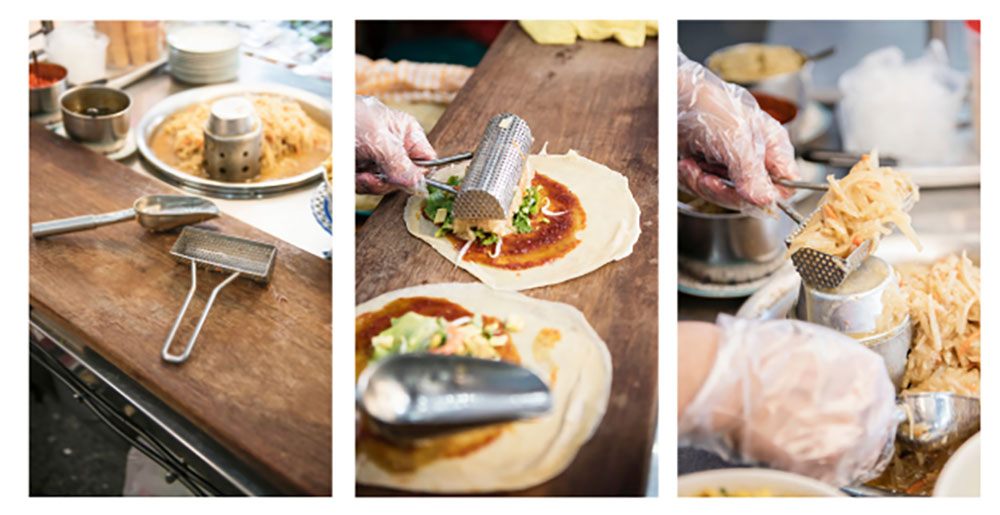
Popiah is a spring roll filled with stewed turnip that is delicious when it’s moist — but not soggy. Glory Catering is well-known for its mouth-watering rendition that is consistently achieved because of a perforated scoop designed by its owners, the Chin family. A typical scoop picks up too much turnip juice and this aluminum tool falls apart easily when it is pressed on to empty out the liquid. The stew cannot be drained in advance either, because it’s what keeps the turnip juicy. Glory created a scoop with more than 400 perforations to quickly remove the turnip juice. It also collects the exact amount of filling needed, in a trough shape that is easy to fold into a roll. Truly a handy way to capture Glory’s craft in making popiah.
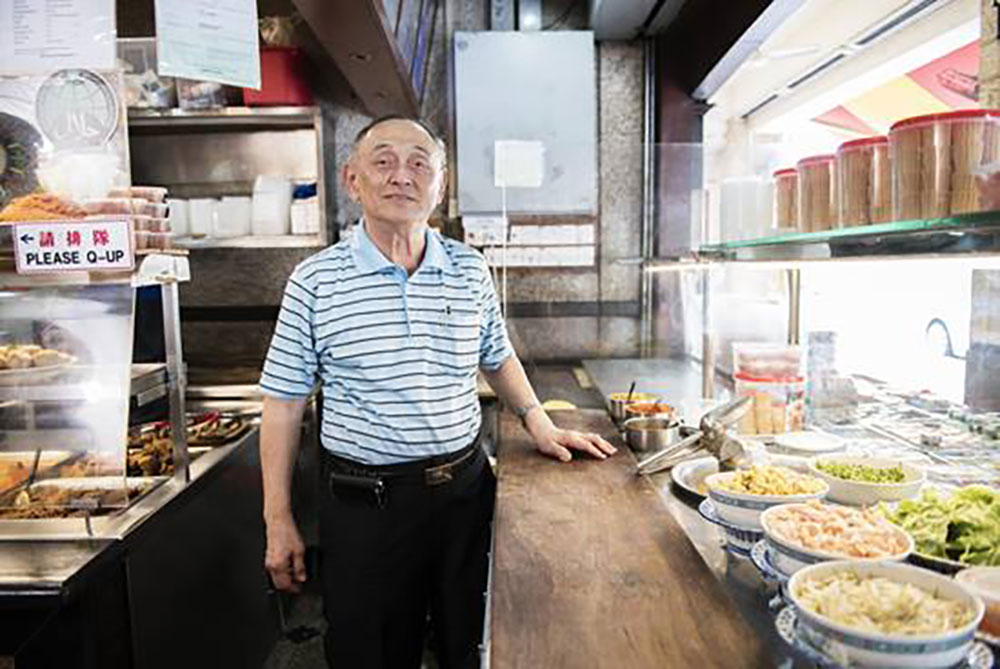
S-HOOK
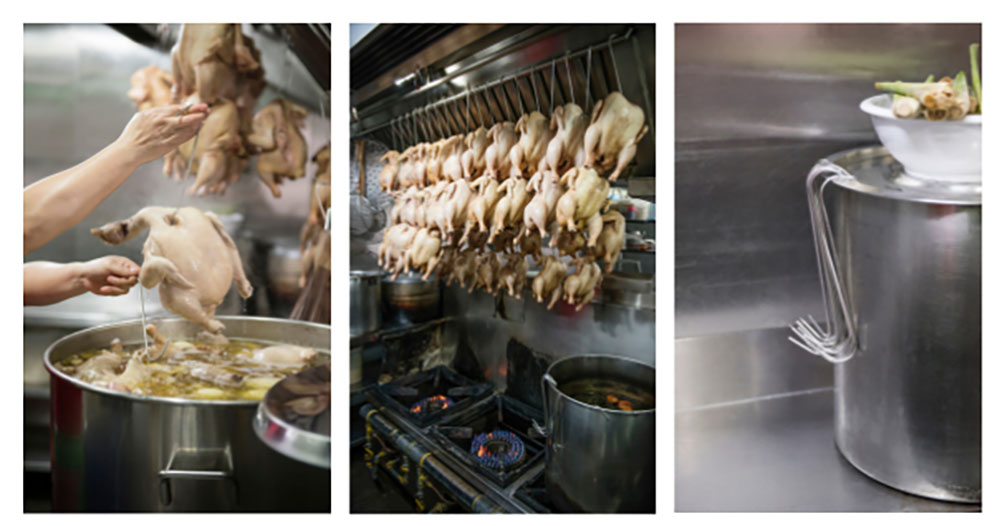
Wee Nam Kee cannot cook chicken rice without this tool, says its second-generation owner, Wee Liang Lian. For this Hainanese chicken rice seller, the S-hook is an extension of the chef’s fingers, and this S-shaped tool helps the restaurant handle up to 100 braised, poached and deep-fried chickens a day. The tool is everywhere in their Marina Square kitchen: used to hang-dry raw chickens above the burning flame and to anchor boiling chickens to the rim of the pot so that their delicate skin stays intact. It’s even on the store’s window display, showing off their chickens’ well-tanned or unblemished fair skins.

WOK, FIRE & SPATULA

The need for speed literally helped the late Ng Chang Siang “design” his own sets of tools for cooking char kway teow (stir-fried flat rice noodles). In the past, the anxious cook would speed up “like a Ferrari” whenever there was a queue and his forceful strokes filed an edge off his iron spatula over time.
Noticing that this made cooking less strenuous because his arm and wrist could now align, Ng began getting such angled spatulas custom-made instead. He complemented this with a shallower wok that could accommodate a bigger batch of pre-cooked kway teow too and the new setup enabled him to fulfil an order in just about 30 seconds. All he had to do was to separate a serving of kway teow from the pile and finish it off with the other ingredients.
To ensure his new cooking method did not compromise on quality, Ng even concealed some of his stove’s burner holes so as not to overcook the kway teow on standby. These tools and methods have since been passed on to Ng’s son, who proudly continues the tradition of dishing out the famous Hill Street Fried Kway Teow in a matter of seconds.
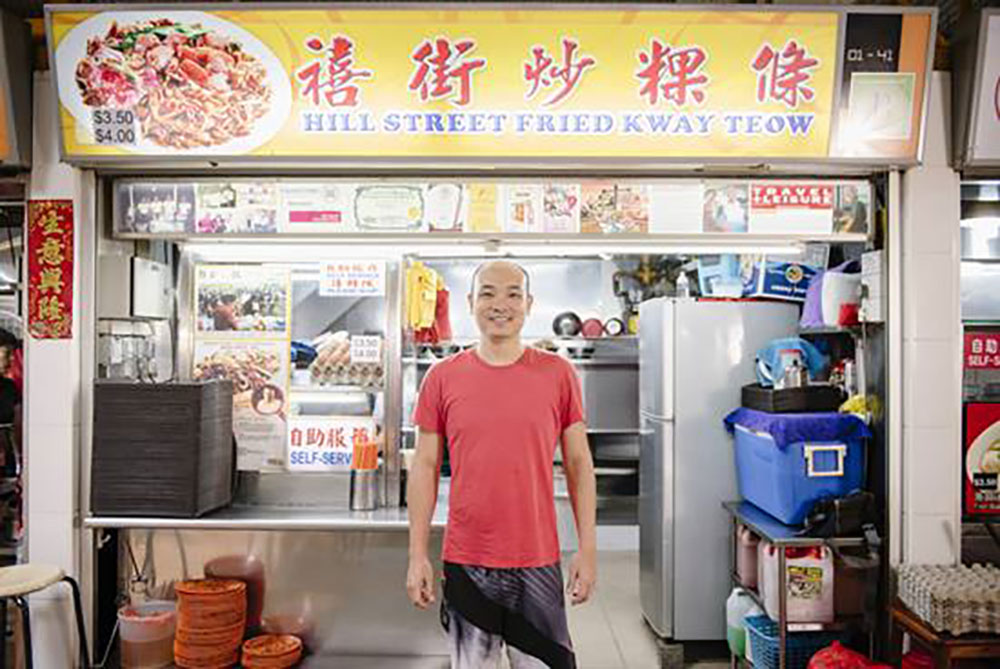
This article was originally published in By Design: SINGAPORE (2019), a collection of 10 stories from Singapore that reframe what design is today. Edited by Justin Zhuang and designed by Modular Unit for Singapore Design Week 2019.







